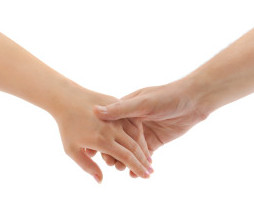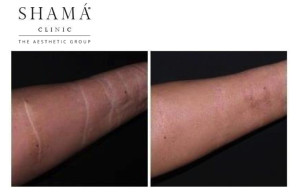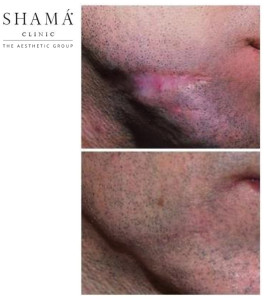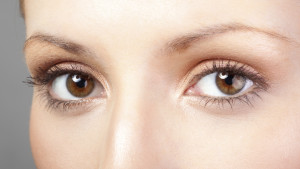Self-harm scars and cuts with Shamá method®
Since 1985, the Shamá Clinic has treated many people with self-injury scars that have had great results with our unique treatment method, the Shamá method®.
1000´s documented treatments implemented, why we can confidently say that our method removes alternatively corrects scars by 50-90%.
Nobel Forum, Karolinska Institute & International Confederation for Plastic, Reconstructive and Aesthetic Surgery (IPRAS) has recognized Shamá method® for its good result. Learn more about our references here!
Patients referred from Swedish county hospitals and foreign medical facilities are continuously sent to Shamá Clinic for treatment.
What is self-harm and cut scars?
Self-harm, self-injury or self-inflicted harm, means to cause injury to oneself by cutting, carving or burning the skin with a harmful item i.e. a knife, razor or lighter etc. This may have taken place under the influence of alcohol or narcotics or because of depression or stress. Scars occur on all parts of the body, usually where it is possible to hide or cover them up i.e. arms and thighs and thus not noticeable by family and friends. Self-inflicted cut scars are usually white or light pink in color and resemble sharp lines or streaks, can be uneven, hypertrophic or hyper- or hypopigmented.
Why hurt oneself?
Have you gone through a personal trauma or a difficult life event? Some people inhibit or alleviate their psychological pain by hurting themselves. The physical pain from the cut is intense and thus dampened the concentration of the psychological pain, which is experienced as a psychological relief. Neither the media, the school or workplace talks openly about self-harm, it is clearly a sensitive subject and socially a taboo topic. The number of self-harm injuries is considerably higher in statistics than previously thought, women and girls are over-represented, men and boys rarely seek help for such injuries. Unfortunately, it is a stigma in society and ignorance among people create shame and fear for those with problems to seek help. One should definitely not hesitate to contact medical professionals.
How we treat self-harm and cut scars with Shamá method®
 Each scar must be treated individually because all cuts / self-injury scars have different anatomical characteristics and conditions. The first visit, the consultation is very important because we thoroughly examine the scars and your anatomical preconditions. You may read more about the First visit here! You may also read more about our treatment method Shamá method® here!
Each scar must be treated individually because all cuts / self-injury scars have different anatomical characteristics and conditions. The first visit, the consultation is very important because we thoroughly examine the scars and your anatomical preconditions. You may read more about the First visit here! You may also read more about our treatment method Shamá method® here!
Phase 1 The first phase of scar treatment is to examine and determine the scar injury in question. The surface of the scar tissue is prepared and penetrated with medical products and antioxidants. These gentle products soften and smooth out the uneven scar tissue. A sterile disposable needle goes very gently into the skin, barely a millimeter deep and is thus not painful. The products used sinks superficially through the skin and acts on the scar days after treatment. It is important to take care of the treated area according to the instructions given. The care after the scar treatment is an important step to get good result. Radio frequency therapy helps stimulate collagen in the skin which complements Shamá method®.
Phase 2 Second phase involves a smoothing of the injured skin surface as well as improvement of melanin (pigment) damage. Several different pigments are mixed together to remove hyper- or hypopigmentation. The first treatments smooth out the surface texture of the scar and thus form a foundation that will be a good base for scar treatment.
Phase 3 In the third phase of the scar treatment, it is about treating to the degree where the scar´s structure achieves a harmony in color and form with the unharmed skin, thus reducing the scar until it’s no longer visible.
How many scar treatments needs to be done & the time between them?
 It is necessary with at least 4 treatments for a satisfactory result. The scar is treated very carefully and the scar treatment is repeated at 8 to 30-day intervals depending on the characteristics of the scar. This is to avoid more stress on an already damaged skin. Every scar, even on the same person can have different properties. For an assessment, a personal visit is required where the scar is examined. Even then, a complete assessment may not be possible. After the first scar treatment, one will come to know the scar and your skin properties completely or at least well enough for a successful treatment process. Scar treatment is a gentle method and therefore repeated several times for a great and safe result. The average number of treatments is about 4-6.
It is necessary with at least 4 treatments for a satisfactory result. The scar is treated very carefully and the scar treatment is repeated at 8 to 30-day intervals depending on the characteristics of the scar. This is to avoid more stress on an already damaged skin. Every scar, even on the same person can have different properties. For an assessment, a personal visit is required where the scar is examined. Even then, a complete assessment may not be possible. After the first scar treatment, one will come to know the scar and your skin properties completely or at least well enough for a successful treatment process. Scar treatment is a gentle method and therefore repeated several times for a great and safe result. The average number of treatments is about 4-6.
What can one expect after a successful breast lift scar treatment?
We have performed 1000s of documented scar treatments on different skin types, and can with confidence say that our method removes scars, alternatively corrects by 50-90%. Every case is of course on an individual basis and only after a consultation can a proper assessment be given. A scar is injured skin tissue and sometimes an overall visible repair isn’t possible. However, it can be much better than before. Many clients and patients have been satisfied with a visible improvement.
Can I return to everyday life as usual after a cut scar treatment?
Yes, it’s perfectly possible to return to everyday life as usual. The treated scar should not be covered with bandage. The first few days you should be careful with heavy exercise where you sweat a lot.
Does it hurt when you treat breast lift scars?
Some experience a tingling sensation, but this is not a painful procedure. Usually, only a topical anesthetic is needed which is applied for about 30-60 minutes. If you are very sensitive, stronger anesthetics is used if necessary.
Does side effects or injuries occur after a scar treatment?
 After 30 years of well documented work, the Shamá method® has not shown any side effects, complications or hazards. The scars are treated in several sessions to create the best outcome which ensures that there are no complications or abrasions on the already damaged scar tissue. Many people believe that because the scar is thick and hard, the upper layer of the skin (epidermis) is also more durable. On the contrary, the scarred skin is more fragile than the normal skin and therefore it has to be treated in several stages with care and diligence.
After 30 years of well documented work, the Shamá method® has not shown any side effects, complications or hazards. The scars are treated in several sessions to create the best outcome which ensures that there are no complications or abrasions on the already damaged scar tissue. Many people believe that because the scar is thick and hard, the upper layer of the skin (epidermis) is also more durable. On the contrary, the scarred skin is more fragile than the normal skin and therefore it has to be treated in several stages with care and diligence.
What happens when I expose the treated area to sunlight?
It’s fine to expose oneself to sunlight two days after scar treatment. However, excessive sunbathing is not recommended.

